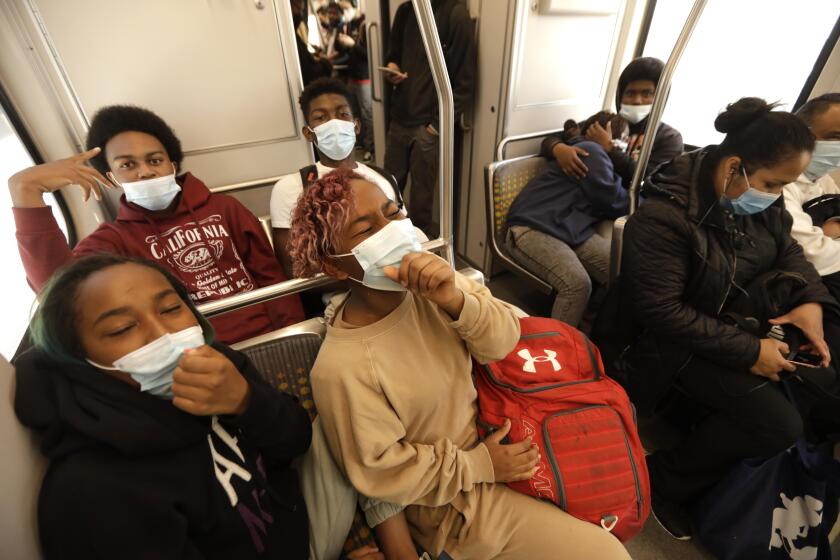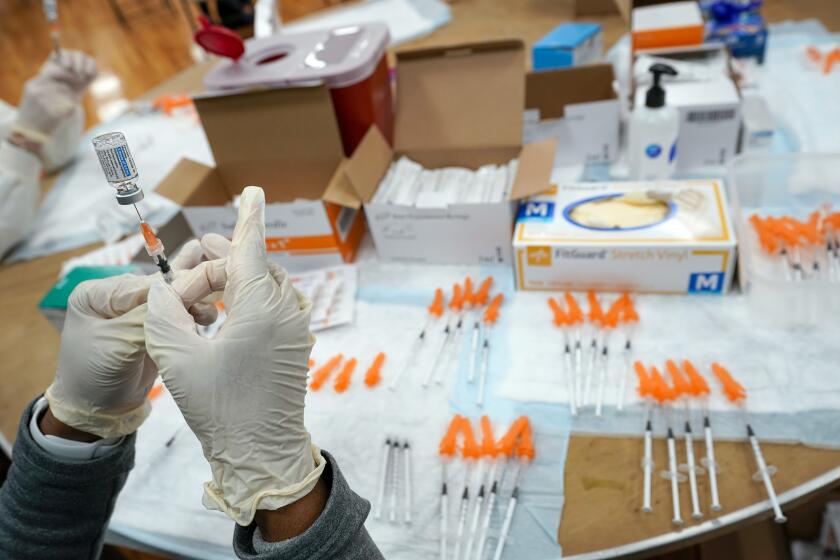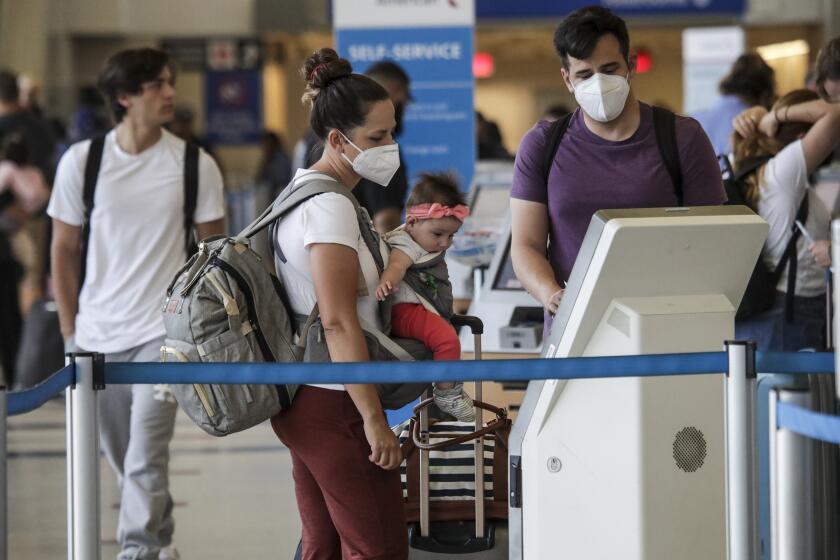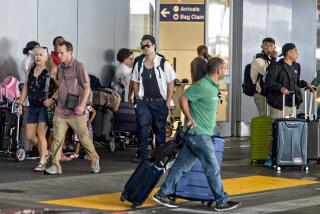Super-infectious BA.5 is a coronavirus ‘beast.’ Here’s how to protect yourself
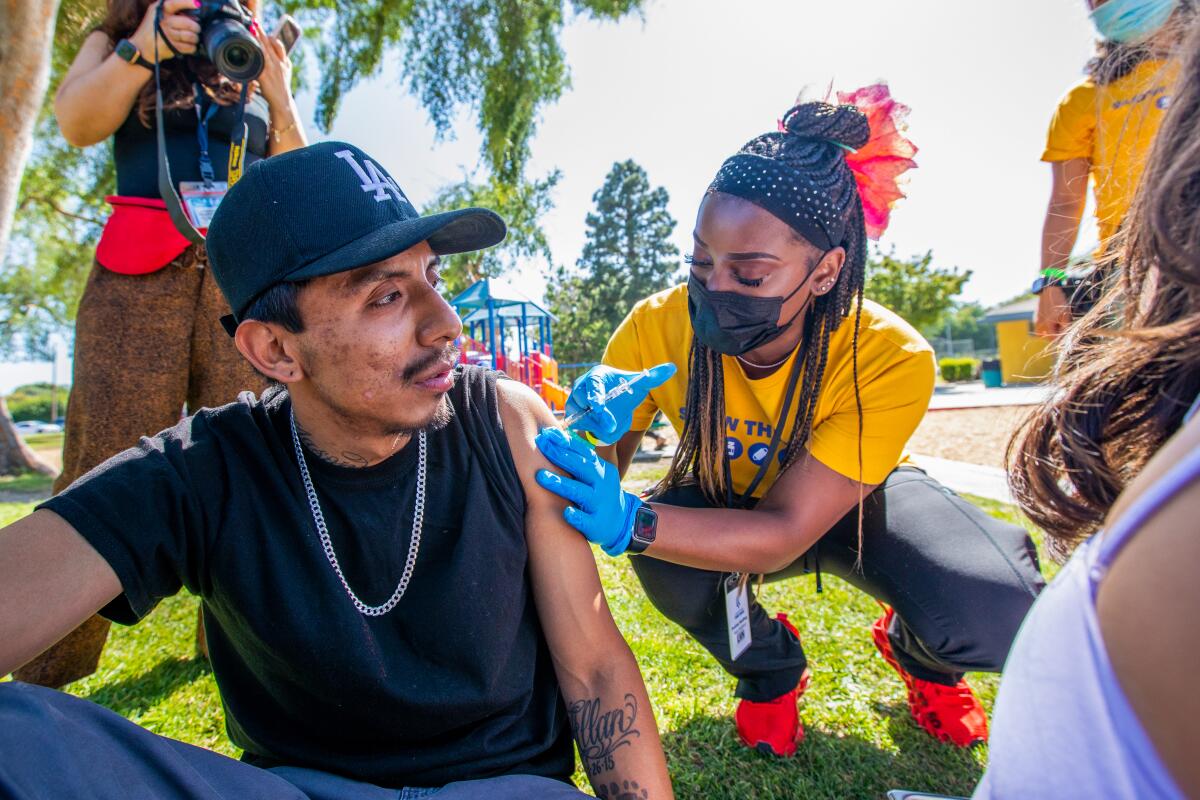
The growing dominance of two super-infectious Omicron subvariants is threatening to exacerbate California’s coronavirus wave, but experts and officials say there are sensible steps residents can take to protect themselves.
Taking preventive measures is especially important now, as the two strains in question — BA.4, and especially BA.5 — have shown the ability to reinfect even those who recently contracted an earlier Omicron subvariant.
“This is one of the biggest implications of BA.5: A prior infection, including an Omicron infection as recent as last month, no longer provides robust protection from reinfection,” Dr. Robert Wachter, chair of UC San Francisco’s Department of Medicine, wrote on Twitter over the weekend.
BA.5 made up an estimated 53.6% of new cases nationwide for the weeklong period that ended Saturday, according to the latest figures from the U.S. Centers for Disease Control and Prevention. A month ago, the subvariant was thought to be responsible for a bit less than 10% of new cases.
“BA.5 is a different beast with a new superpower: enough alteration in the spike protein that immunity from either prior vax or prior Omicron infection (including recent infection) doesn’t offer much protection,” according to Wachter.
Subvariants BA.4, BA5 are ultra-contagious and capable of reinfecting those who have survived earlier Omicron infection
Here are some steps experts and officials say you can take to help ward off these latest versions of the coronavirus:
Vaccination basics
Experts are urging people to get up-to-date on their vaccinations, and that includes getting a first booster shot, or second booster if eligible. Vaccinations and booster shots have been key factors in keeping hospitalizations relatively modest for now.
According to the latest available data from the California Department of Public Health, unvaccinated individuals were more than five times more likely to get COVID-19 than their vaccinated-and-boosted counterparts. They were also 7.5 times more likely to be hospitalized and 14.5 times more likely to die from the disease.
Currently, the CDC recommends a second booster for anyone 50 and older, as well as immunocompromised people 12 and older, at least four months after a first booster.
The combination of initial and recurring infectivity carries enormous implications for how the pandemic will continue to play out.
Children under the age of 5 are now eligible to be vaccinated.
While the value of vaccinations and boosters “in preventing a case of COVID, or preventing transmission, is now far less than it once was,” the shots remain “hugely valuable in preventing a severe case that might lead to hospital/death,” Wachter wrote on Twitter.
Reformulated boosters tweaked to add protection against the newest mutations of Omicron are also expected to roll out this fall.
But there remain questions about how available that formulation will be, considering that Congress has not yet approved billions of dollars needed for pandemic-control efforts, including money to preorder vaccinations.
U.S. regulators are telling COVID-19 vaccine makers to tweak any booster doses intended for fall so they protect against the newest versions of Omicron.
That rollout also will likely be delayed until November to incorporate a vaccination formula designed against the more recent Omicron subvariants, rather than the oldest version, which scientists fear would be relatively obsolete by then.
Some eligible residents may be wondering whether they should delay getting their second booster until the updated shots are available. For those over the age of 50, “I’d say no — there’s too much COVID around and evidence of benefit from boost #2 is persuasive,” according to Wachter.
“If the new booster is highly effective (not guaranteed), I doubt that getting a second boost now will block you from getting [a] bivalent boost in fall,” he wrote.
Dr. Peter Chin-Hong, a UC San Francisco infectious-disease expert, also said his “advice is to go ahead and get” a booster now, rather than waiting.
L.A. County’s coronavirus case rate hit its highest point in nearly five months over the Fourth of July holiday weekend.
Masks
While masks are no longer required in most indoor public places statewide, many experts say they continue to offer a worthwhile layer of protection.
California officials have consistently urged residents to use face coverings in public interior settings, including stores, restaurants, theaters and family entertainment centers. Los Angeles County has gone a step further and still requires face coverings on public transit, including ride-sharing vehicles, and in indoor transportation hubs.
“As families gather for summer barbecues, vacations and camp, the best way to avoid disruptions to summer plans is to be sure that everyone is up-to-date on vaccines, to wear a mask when indoors around others, wash hands frequently, and to stay home and away from others when sick,” L.A. County Public Health Director Barbara Ferrer said this week.
Gatherings
Outdoors gatherings are preferable to indoors. If you must gather inside, make the setting as well-ventilated as possible by opening doors and windows. Wearing masks also offers an additional layer of protection, officials say.
Health experts also recommend using rapid tests to check infection status as close to the start of a gathering as possible — especially if older people or those with underlying health conditions are present, or if attendees have frequent contact with vulnerable people.
“To do indoor gatherings safely, it’s really about good masking (and no indoor eating) and ventilation. Adding pre-event rapid testing offers additional protection,” Wachter wrote.
More to Read
Sign up for Essential California
The most important California stories and recommendations in your inbox every morning.
You may occasionally receive promotional content from the Los Angeles Times.

